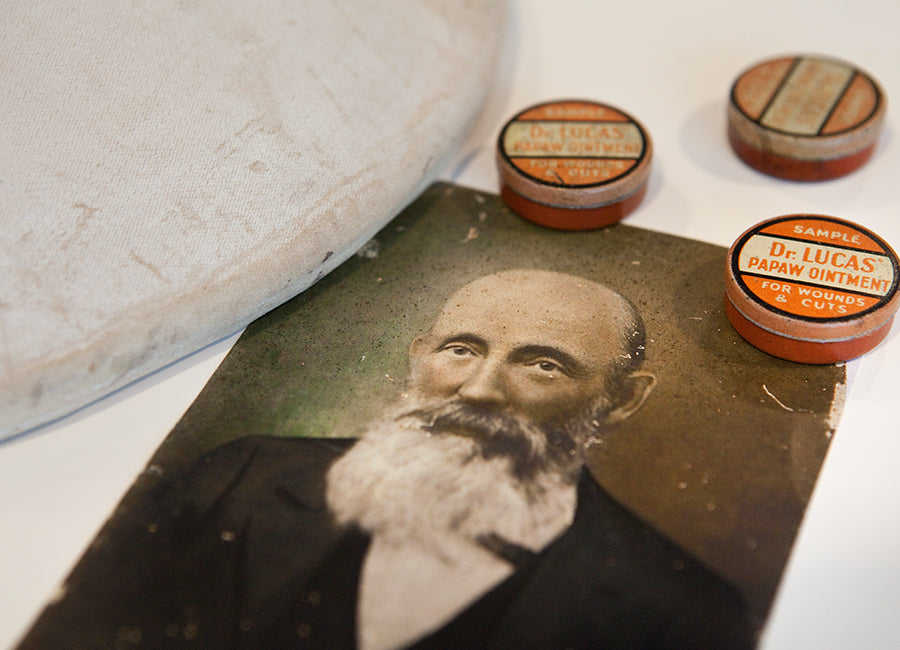
Formulated by Dr T.P Lucas
Born in Scotland in 1843, Thomas Pennington Lucas developed a love for natural history, botany and medicine from a young age. This led to a lifetime passion for botany and an esteemed career as a medical practitioner. As his degrees, diplomas, and honours indicate, Dr Lucas was among the leading medical men of his day.
- Memb. Linnean Society, London
- Memb. Royal College of Surgeons, England
- Lic. Royal College of Physicians, Edinburgh
- Lic. Medicine and Midwifery, Edinburgh
- Lic. Society of Apothecaries, London
- Late fellow Medical Society, London
- Memb. British Medical Association
- Fel. Linnean Society, N.S.W.
- Fel. Royal Society of Queensland
Image: Dr Thomas Pennington Lucas the inventor and founder of Lucas' Papaw Remedies.
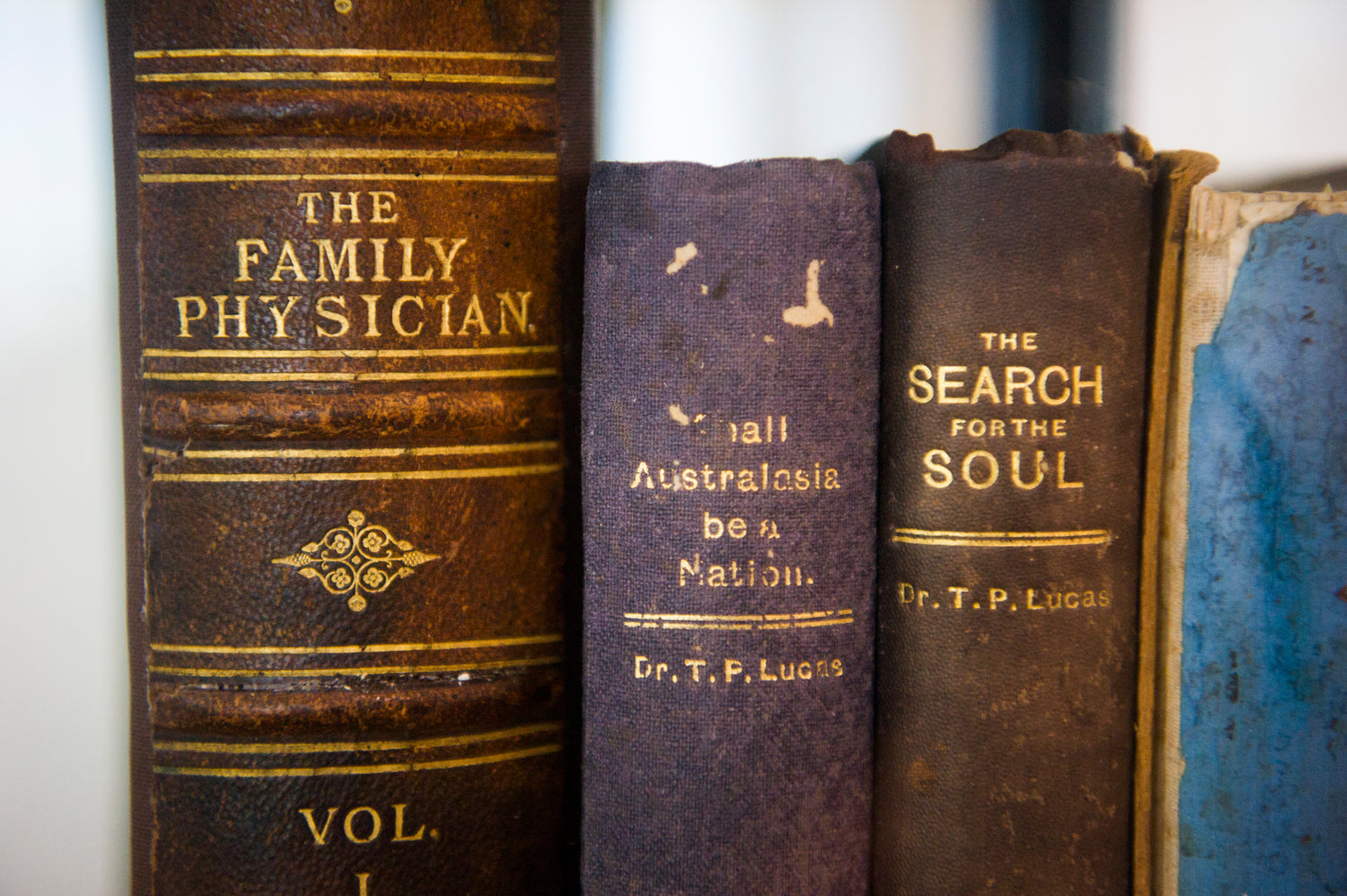
In addition to his studies and involvement with many prestigious groups, Dr Lucas was also a contributor to the British Medical Journal, London as far back as 1875.
Originally practicing medicine in London, Dr Lucas came to Australia in 1876 seeking a warmer climate. He initially moved to Melbourne where he practiced for 10 years before moving to Brisbane, Queensland. It is in Queensland that the story of Lucas’ Papaw Ointment really starts to take shape.
Image: A collection of Dr Lucas' books from the late 1800's remains on display in the Lucas' Papaw Museum
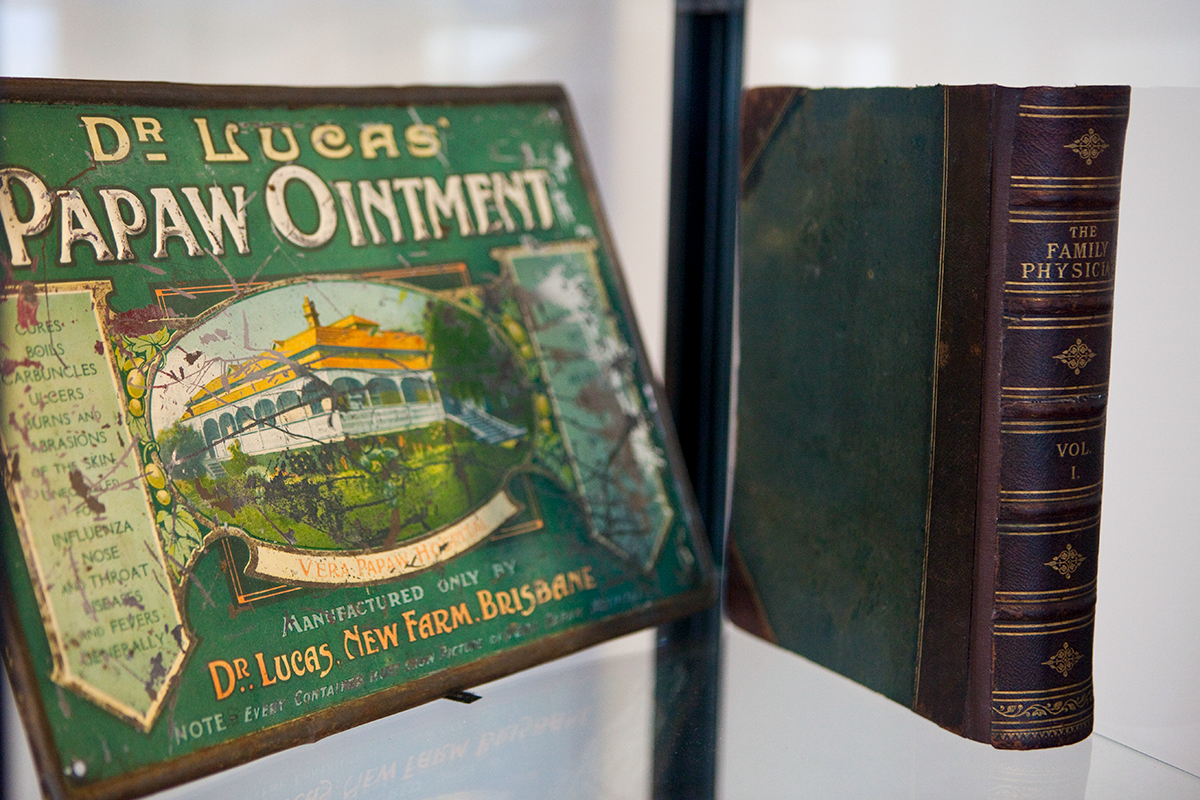
"The World's Greatest healing agent"
After moving to Queensland, Dr Lucas carried out numerous scientific studies, botanical and medicinal experiments, looking for a natural remedy for disease. Dr Lucas started to combine his medical training with his profound knowledge of natural history and botany. While carrying out his botanical research, Dr Lucas studied tens of thousands of botanical specimens. The specimen which commanded his closest attention and to which he devoted special study was the Carica Papaya (Papaw) tree.
The papaw plant and its fruit impressed Dr Lucas so much that his investigations led him to describe it as “the world’s greatest healing agent”. From then on, Dr Lucas devoted his research to its application to modern medicine and, as a consequence, its benefits to humanity.
Image: A pamphlet written by Dr T.P. Lucas on the wonderful benefits offered by papaws and Lucas' Papaw Ointment.
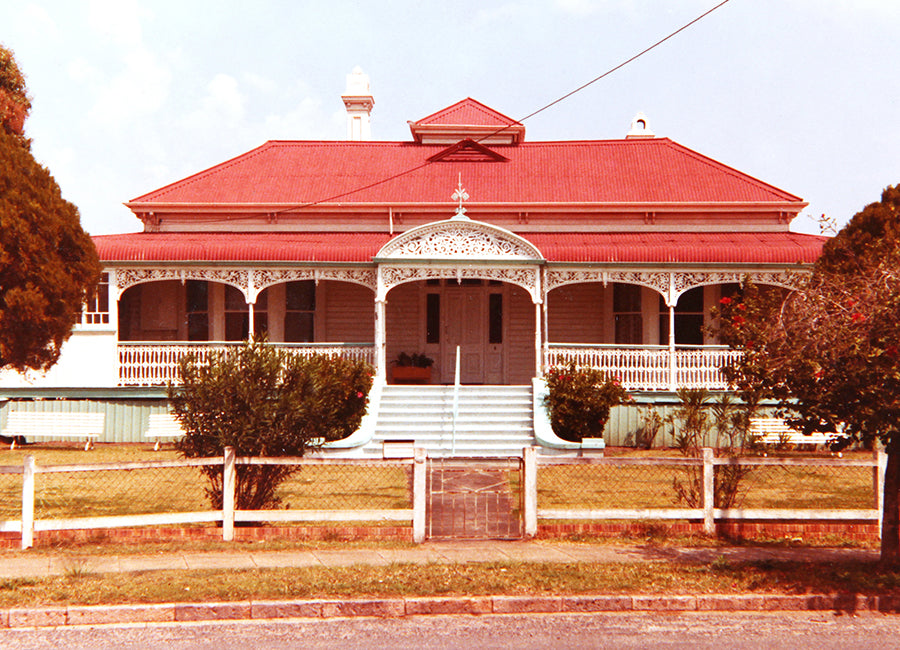
Papaw Ointment & the Vera Papaw Hospital
The passion Dr Lucas had for medicine and caring for people led him to open a special hospital called “Vera”. At the hospital, located in Brisbane, patients were treated solely by his papaw remedies. Take a look at your red jar or tube of Lucas' Papaw Ointment and you will see the trademark “Vera Papaw Hospital” picture is still printed on them today.
The hospital recorded many fantastic results, including cases of disease which had until then been deemed incurable yielding to this latest treatment. As people saw the benefits of the ointment, its use spread around Australia and the world. There was even a testimony to Papaw written in 1910 by the Great Ormond St. Hospital London.
Image: The Vera Papaw Hospital in New Farm, Brisbane where Dr Lucas treated patients with his papaw remedies.
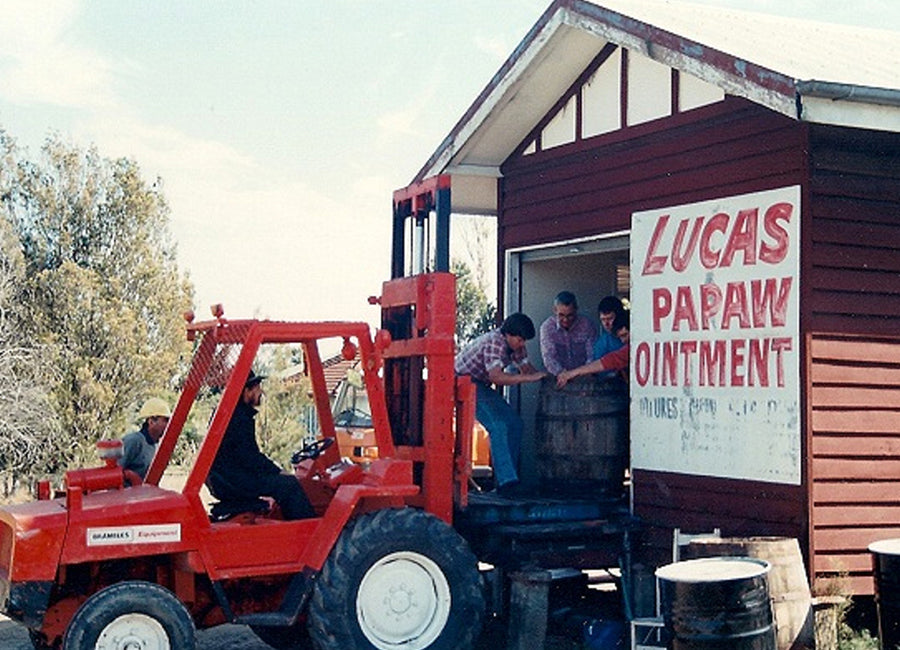
The Legacy of Dr Lucas and his Ointment
On his death, Dr Lucas left to his widow the complete formulae of his preparations and all directions for compounding them. Mrs Lucas (who for many years had been actively engaged with him in his hospital work) gave active and devoted attention to continuing the production of the ointment that her husband had worked so hard to create.
After the death of Dr Lucas it was impossible to carry on the overwhelming work that the Vera Papaw Hospital entailed. However, it was possible to make available for the public benefit the remedies which were used for treatment and therapy.
Now several generations on, the all important papaw remedies have been passed on to the descendants of Dr Lucas. Today, the family owned business continues to manufacture Lucas’ Papaw Ointment to the same formula that Dr Lucas used to prepare the ointment he worked so hard to create in his lifetime.
Image: The 'Little Brown Shed' where Lucas' Papaw Ointment was hand crafted for generations before shifting to a purpose built facility on the same site.

